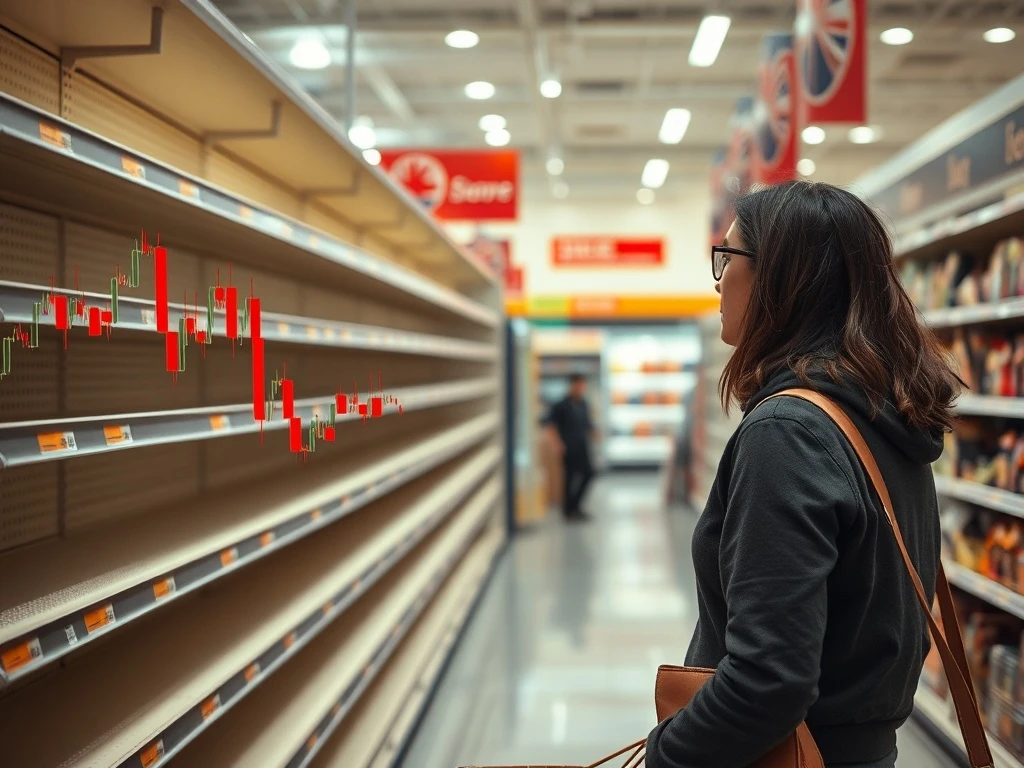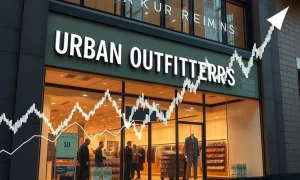UK retailers faced a devastating £1 billion market value collapse on Tuesday as Deutsche Bank’s alarming fear index revealed an unprecedented consumer squeeze gripping British households. This dramatic selloff signals deepening economic anxiety ahead of Chancellor Rachel Reeves’ autumn budget.
Severe Consumer Squeeze Triggers Market Panic
Deutsche Bank’s analysis exposed a widespread consumer squeeze affecting all income groups. Consequently, investors rapidly dumped retail stocks. The bank’s fear index clearly shows rising anxiety about job security and potential tax increases. Moreover, shoppers are cutting discretionary spending despite wage growth.
Retail Giants Hit by Consumer Spending Crunch
Major retailers suffered significant losses during the market rout. Primark owner Associated British Foods dropped 4% after a Deutsche downgrade. Similarly, DIY chain Wickes plummeted 8.6% to three-month lows. Furthermore, Kingfisher fell 4.3% despite a milder rating cut.
- Associated British Foods: 4% decline to £22.22
- Wickes: 8.6% crash to 201.5p
- Kingfisher: 4.3% drop to 269p
- Marshalls: 3.2% fall to decade lows
Inflation Deepens Consumer Pressure
July’s inflation surge to 3.8% exacerbated the consumer squeeze significantly. Grocery prices jumped 4.9% – the sharpest increase since February 2024. Meanwhile, the Bank of England predicts food inflation will exceed 5% soon. Consequently, household budgets face relentless pressure.
Income Groups React Differently to Economic Strain
The consumer squeeze impacts various demographics uniquely. Surprisingly, higher-income households show greater financial concern currently. However, lower-income families experience more severe disposable income declines. Specifically, the poorest households saw incomes drop 11.1% in July.
Budget Concerns Amplify Consumer Anxiety
October’s budget announcement intensifies the consumer squeeze fears. Wealthier consumers worry about potential tax rises significantly. Simultaneously, frozen tax thresholds continue hurting middle-income families. Businesses also face £25 billion in additional national insurance costs.
Expert Analysis on Consumer Spending Trends
Sam Miley of Cebr warns about persistent inflationary pressures. Although wages grew 4.8% recently, inflation erodes purchasing power constantly. Therefore, households continue saving rather than spending. This behavior reflects deep uncertainty about economic prospects.
Retail Sector Faces Challenging Winter
The combination of factors creates a perfect storm for retailers. High inflation, weak confidence, and fiscal tightening converge dangerously. Analysts fear autumn tax rises could deepen the downturn substantially. Ultimately, consumer-facing companies prepare for a difficult winter season.
Frequently Asked Questions
What is Deutsche Bank’s fear index?
The fear index measures consumer anxiety levels across different income groups. It tracks concerns about job security, tax changes, and economic outlook.
How much value did UK retailers lose?
Nearly £1 billion was wiped from six major retailers’ market capitalization in a single day.
Which retailers were most affected?
Primark owner ABF fell 4%, Wickes dropped 8.6%, and Kingfisher declined 4.3% during the selloff.
Why are consumers cutting spending?
Shoppers are saving more due to uncertainty about jobs, taxes, and inflation despite wage increases.
How does inflation affect the situation?
July’s 3.8% inflation rate, driven by 4.9% grocery price increases, significantly reduces purchasing power.
What are the expectations for the autumn budget?
Analysts expect potential tax rises that could further pressure household finances and retail performance.








